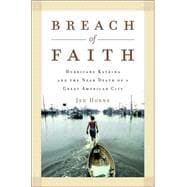
| Maps | viii | ||
| Introduction | xv | ||
| ONE A Camille on Betsy's Track | 3 | (19) | |
| TWO When Wallyworld Closes at Four | 22 | (19) | |
| THREE An Imperfect Storm | 41 | (7) | |
| FOUR Real Ugly, Real Fast | 48 | (25) | |
| FIVE Decaf Cigarettes and Golden Carp | 73 | (10) | |
| SIX Other Texans, Other Times | 83 | (23) | |
| SEVEN Media in the Moment | 106 | (14) | |
| EIGHT At Least Somebody Had a Plan | 120 | (12) | |
| NINE Code Gray | 132 | (13) | |
| TEN Like Bricks on Jell-O | 145 | (23) | |
| ELEVEN Help Yourself | 168 | (19) | |
| TWELVE A Rockets Jersey and a Picture of Jesus | 187 | (13) | |
| THIRTEEN Reversal of Fortune | 200 | (18) | |
| FOURTEEN In Search of Common Ground | 218 | (14) | |
| FIFTEEN If They Can Rebuild Beirut | 232 | (11) | |
| SIXTEEN Crunch Time | 243 | (11) | |
| SEVENTEEN Sue the Bastards | 254 | (21) | |
| EIGHTEEN A Comparable Catastrophe | 275 | (13) | |
| NINETEEN Visions of a City Reborn | 288 | (18) | |
| TWENTY Blue Tarps in a Chocolate City | 306 | (9) | |
| TWENTY-ONE Shrink-Proof City | 315 | (12) | |
| TWENTY-TWO Safe Enough for Cows | 327 | (14) | |
| TWENTY-THREE Children with Bad Timing | 341 | (20) | |
| TWENTY-FOUR Failure Is Not an Option | 361 | (13) | |
| TWENTY-FIVE Summing Up | 374 | (13) | |
| Acknowledgments | 387 | ||
| Interview List | 384 | (7) | |
| Notes | 391 | (10) | |
| Index | 401 |
The New copy of this book will include any supplemental materials advertised. Please check the title of the book to determine if it should include any access cards, study guides, lab manuals, CDs, etc.
The Used, Rental and eBook copies of this book are not guaranteed to include any supplemental materials. Typically, only the book itself is included. This is true even if the title states it includes any access cards, study guides, lab manuals, CDs, etc.
Excerpted from Breach of Faith: Hurricane Katrina and the near Death of a Great American City by Jed Horne
All rights reserved by the original copyright owners. Excerpts are provided for display purposes only and may not be reproduced, reprinted or distributed without the written permission of the publisher.